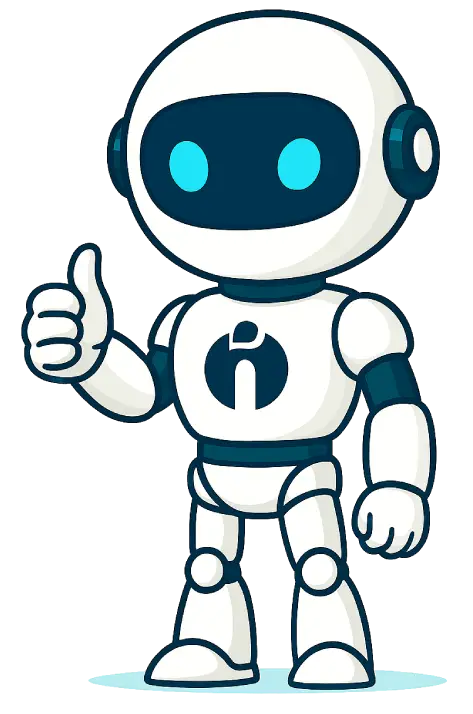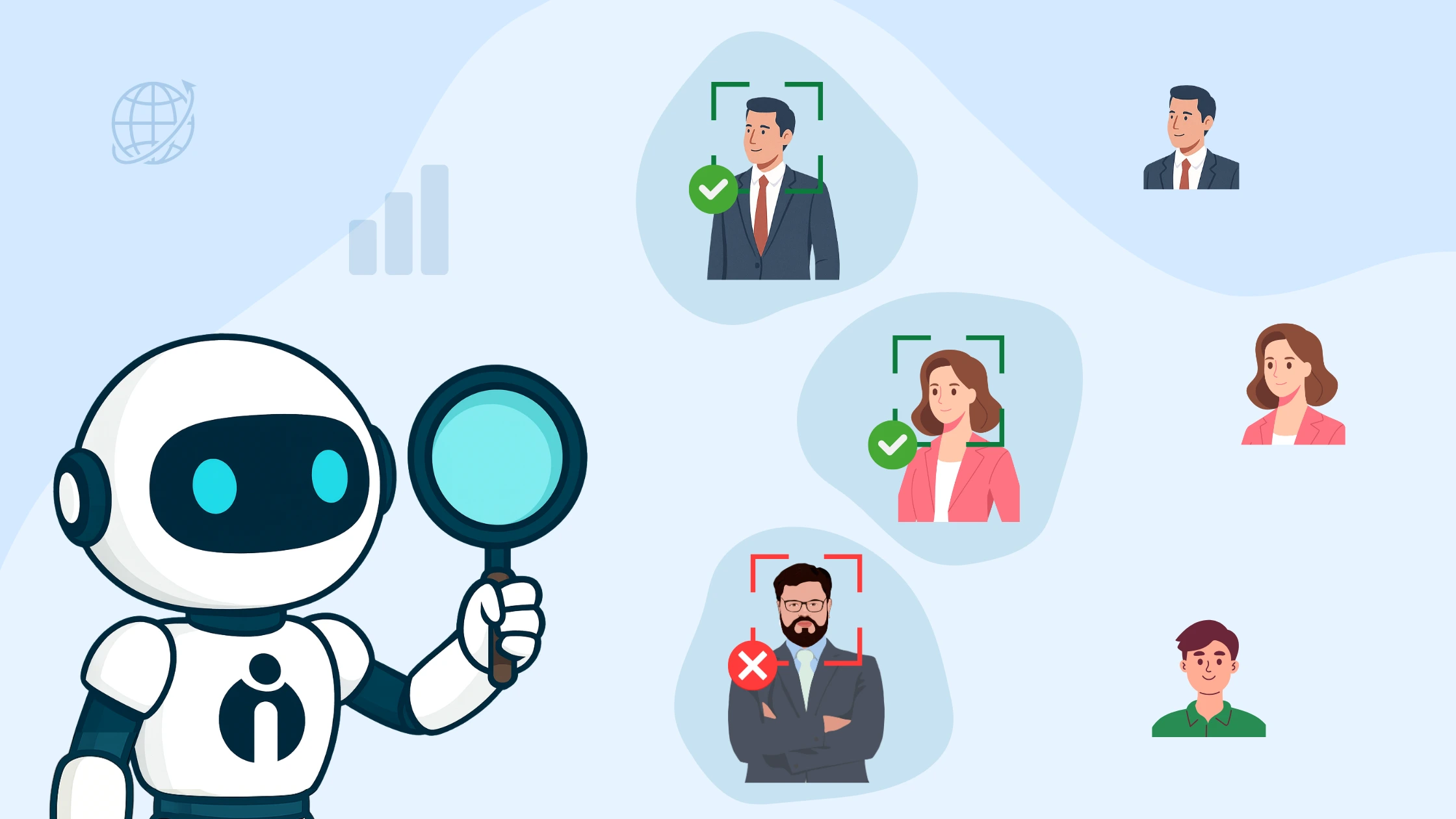TL;DR
- Recruitment technology, including AI and automation, is transforming hiring processes by improving efficiency and candidate experience.
- Key recruitment tools include Applicant Tracking Systems, recruitment advertising platforms, video interviewing software, and AI-powered candidate matching.
- Selecting the right recruitment technology involves considering alignment with strategy, user-friendliness, customer support, compatibility, cost, and data analytics capabilities.
- Benefits of recruitment technology include increased efficiency, wider candidate reach, better data insight, improved candidate experience, and cost savings.
- Measuring success through KPIs like time to hire, cost per hire, candidate quality, diversity, and employee retention is essential.
- Best practices for implementation focus on clear objectives, usability, integration, privacy, ongoing training, and keeping up with industry trends.
- Important 2026 trends include mobile recruitment, AI and machine learning, data-driven hiring, gig economy impacts, and recruitment chatbots.
In recent years, recruitment technology has changed the way companies find, screen, and bring new employees. From using AI to match candidates to screen resumes, recruitment technology has made the hiring process faster, more efficient, and less likely to go wrong.
In fact, according to the Society for Human Resource Management, over 75% of organisations use recruitment technology to assist with their hiring efforts. That's expected to increase significantly.
According to a recent study, the global recruitment technology market is expected to grow at a rate of 7.68% per year until 2028, when it will be worth $230.47 billion.
In this blog, we will dive deep into the recruitment tech world and explore how cutting-edge tools and best practices are reshaping the way organisations source, attract, and recruit candidates. Also, we will learn key things when selecting hiring technology, ways to measure its effectiveness, and future recruitment technology trends recruiters need to adapt.
So, let’s get started!
What Is Recruitment Technology?
Recruitment technology is also known as hiring technology or talent acquisition technology. Technology in recruitment refers to the use of cloud-based or on-premise software, technological tools, and digital solutions to streamline and manage your end-to-end recruitment process, from sourcing potential candidates to onboarding the most suitable talent.
In a modern hiring landscape, recruitment technology is also referred to as "RecTech". It is designed for hiring professionals to make a seamless and data-driven recruiting process.
Let’s look at some of the key recruitment technology tools to improve your hiring workflow!
Top 10 Recruitment Technology Tools in 2026
Organisations have access to several Talent Acquisition Software and Tools to choose from to fit their specific needs. From AI recruitment technology to IT technologies lists for recruiters, organisations need to stay up-to-date with the latest recruiting technology trends and advancements in technology in recruitment and selection.
With AI playing a more significant role in the hiring process, organisations must embrace the latest talent acquisition process and strategies and hiring technology to stay ahead of the curve. Whether it's selecting the best recruiting technology, utilising the newest recruitment technology tools, or keeping up with the latest HR technology, the possibilities are endless.
Recruiters use recruitment technology globally to streamline and automate various aspects of the hiring process for growth:
1. Applicant Tracking Systems (ATS)
An Applicant Tracking System (ATS) is a central database where information about candidates is kept and managed. It helps recruiters keep track of applicants, talk to them, organise the database and make hiring decisions based on accurate information.
By using ATS Software, recruiters and HRs can easily manage job postings, sift through resumes, schedule interviews, and collaborate with hiring managers and other team members.
2. Recruitment Advertising Platforms
Indeed, Recruitment Marketing helps companies promote their employer brand to attract candidates through several channels, such as job boards, social media, and email campaigns.
Also, the recruitment marketing platform helps organizations post open jobs to reach a wider range of potential candidates.
3. Video Interviewing Software
Video interview software allows hiring managers to conduct remote interviews efficiently. Video Interviewing Software offers functionality and different features to streamline and manage the interview process using video communication.
These video interviews let recruiters check out a candidate's communication skills and personality from afar. In the early stages of hiring, this can save time and effort.
4. Employee Referral Software
Employee Referral Software lets organisations get the maximum benefits from their current employees' networks to find and hire potential candidates via employee referral programs and provide fruitful benefits and incentives to their employees for successful referrals.
This way, the employee referral portals make it easy for employees to refer their friends and the recruitment team to network easily to fill the job openings.
5. Pre-Employment Assessment Tools
The candidate screening process becomes easier when assessment and testing tools are handy.
Nowadays, companies are using these pre-employment assessment tools to evaluate candidates' skills, knowledge, abilities and personality traits to figure out if a candidate is the right fit for a job.
6. Onboarding Software
Onboarding is an incredibly important part of the recruitment process and directly impacts the employee retention rate. Hence, to give a positive experience during the onboarding process, HRs and recruiters use onboarding software.
Onboarding software helps companies streamline the process of getting new hires up to speed and integrated into the company culture.
7. Diversity and Inclusion Tools
Diversity and inclusion tools are software solutions that help companies make sure that their hiring process is fair and inclusive and that they get a wide range of applicants.
The tools may come with a package of diversity training programs and analytics platforms to analyze and track diversity metrics, detect biases, and increase employee engagement. Such DEI tools play a very important role in enabling a diverse and inclusive company culture and promoting equity for all.
8. Automated Resume Screening
The Resume Parser Tool import and parse tons of candidate resumes, detect all the key information and store it in the candidate database.
This way, the resume screening tool scans resumes quickly and removes the candidates that don't meet the company's requirements. This saves recruiters time and makes it easier for them to focus on the best candidates.
9. AI-Powered Candidate Matching
AI matching algorithms can look at a candidate's skills, experience, and interests to find a job that fits them, and it also suggests suitable candidates for a particular job.
This can help find better matches faster and make it more easy for recruiters to hire the right person for the job.
10. Recruitment Chatbots
Recruitment Chatbots can answer candidates' common questions and tell them about the company and open positions. This can improve the candidate experience and help get them more involved.
These are some of the most common recruitment technology tools used in the hiring process. Depending on the goals and needs of a company, they may use one or a combination of these tools to enhance their recruitment process.
Key Considerations When Choosing Recruitment Technology
Selecting the right technology in recruitment is crucial in ensuring an efficient process. To make a well-informed decision, you should consider several essential factors that will help you find the best solution for your organisation. These factors include:
1. Check an Alignment with Your Recruitment Advertising Strategy
Identify your organization's unique recruitment goals and needs. Then, choose a recruitment technology that aligns with your overall recruitment strategy.
For example, if you're using programmatic job advertising to target specific groups of candidates, then you will need to choose a technology platform that supports that suitable approach.
2. Is it User-Friendly?
The recruitment technology you choose should be easy to use so that you and your team can easily post job advertisements and manage applications. Look for a platform with an intuitive feature interface and clear instructions so that your HR team and hiring managers don't waste time figuring out how to navigate and use it effectively.
3. What Level of Customer Support Offered by the Tech Provider?
You need to look for a technology provider that offers excellent customer service automation and technical support so that you can get help quickly if you run into any issues. This is especially important if you're not very tech-savvy and need help with the platform.
Check for criteria such as response time, technical expertise and training resources before acquiring recruitment tech.
4. Check the Ability to Reach a Specific Group of Potential Candidates
Some recruitment technologies allow you to target specific groups of potential candidates, such as those with certain skills or experience. This can be a great way to ensure that the right people see your job ads.
5. Review Compatibility with your Existing HR Tools and Systems
You need to make sure that the recruitment technology you choose is compatible with your existing HR tools and systems, such as your applicant tracking system (ATS) or HR management software. This can save you time and hassle in the long run.
6. Is the Recruitment Tech Cost-effectiveness?
Recruitment technology can vary widely in cost, so it is important to choose a cost-effective platform that provides value for money. Check the total cost of ownership, which includes subscription charges, implementation costs, and training fees. Look for a technology provider that offers transparent pricing and no hidden fees.
7. Assess Data Analytics Capabilities
Finally, it's important to choose a recruitment technology that provides data and analytics capabilities so that you can measure the success of your recruitment efforts.
These hiring and recruitment metrics can help you fine-tune your recruitment advertising strategy and make better hiring decisions in the future.
5 Major Benefits of Recruitment Technology
Recruitment technology is becoming a more popular tool for companies that want to improve their hiring process. Companies can find and hire top talent quickly, effectively, and with fewer mistakes with the help of different technologies.
There are many good reasons to use recruitment technology, and both recruiters and job seekers can benefit from it. Recruitment technology is a must-have for any company that wants to stay ahead in the competitive world of talent acquisition. It can help improve efficiency, give valuable data insights, improve the candidate experience, or cut costs. Here are some advantages:
1. Increased Efficiency
Recruitment technology makes the hiring process more efficient by automating time-consuming tasks like reviewing resumes and communicating with candidates. This lets recruiters focus on the most important parts of their jobs. It also gives valuable data and analytics that can be used to improve the hiring process by keeping track of key recruitment metrics.
2. Improved Candidate Experience
Talent acquisition technology can provide a more seamless and convenient experience for job seekers by allowing them to easily apply for jobs, track their application status, and receive timely updates and communication from recruiters.
3. Access to a Wider Pool of Candidates
Recruitment technology can expand the reach of job ads, allowing recruiters to access a larger talent pool of candidates from different geographical locations and backgrounds. This helps to increase diversity and inclusivity in the hiring process.
4. Better Data Insights
Recruitment technology gives recruiters valuable data insights, such as which job ads get the most applicants, which sources provide the best candidates, and how long the hiring process takes. Recruiters can use this information to make smart choices and improve the process of hiring.
5. Saves Hiring Cost
Recruitment technology can help cut costs because it can replace manual processes and paper-based systems. It can also help cut down on the time it takes to hire someone and the number of people who leave a job, which can save money in the long run.
How to Measure the Success of Recruitment Technology?
When companies use recruitment technology to help with hiring new employees, they want to know if it's working well. Here are some of the essential recruiting KPIs to measure the success of this technology:
1. Time to Hire
Measuring the time it takes to hire a candidate is crucial in determining the efficiency of the recruitment process. Recruitment technology can streamline the hiring process by automating some steps, such as candidate screening, scheduling interviews, and communication. A decrease in the time to hire indicates that the recruitment technology is working well and saving the company time and resources.
2. Cost per Hire
The cost per hire is the total cost incurred by the company to hire a candidate, including all expenses such as advertising, recruitment software, HR staff time, etc. Recruitment technology can help reduce the cost per hire by automating certain tasks and eliminating the need for manual labour. By measuring the cost per hire, companies can determine if their recruitment technology is cost-effective and provides a positive return on investment. Utilizing tools like an employee cost calculator can streamline this evaluation process further.
3. Candidate Quality
Measuring the quality of candidates hired is critical in determining the effectiveness of recruitment technology. Recruitment technology can help identify the best-fit candidates by using AI to match job requirements with candidate profiles, sourcing talent from various channels, and reducing biases in the hiring process. Companies can measure the performance and retention rate of hires made through recruitment technology to see if candidates' quality is improving.
4. Diversity
Measuring the diversity of candidates hired is important to ensure that the hiring process is inclusive and promotes equal opportunities. Recruitment technology can help increase diversity by removing biases in job descriptions, using AI to screen resumes and sourcing candidates from a wide variety of platforms. Companies can tell if their recruitment technology is doing a good job of promoting diversity and inclusion in the hiring process by looking at the types of people they hire.
5. Candidate Experience
Candidate experience refers to the ease and satisfaction of the application process. Recruitment technology can provide a more efficient and streamlined application process with features such as mobile-friendly applications, automated follow-ups, and easy communication.
By measuring candidate satisfaction with the hiring process, companies can see if their recruitment technology improves the employer brand by giving candidates a good experience.
6. Employee Retention
Measuring employee retention is crucial in determining the long-term success of recruitment technology. Recruitment technology can help identify the best-fit candidates for a job, resulting in higher retention rates. By looking at employee retention rates, companies can tell if their recruitment technology is helping them find better hires and get their employees more involved.
By measuring these factors, companies can determine if their recruitment technology is working well and making the hiring process more efficient and effective.
Best Practices for Implementing Recruitment Technology
-
Start by making sure you know what you want and need from a job candidate. Find out which recruitment technology tools will help you reach your recruitment goals and help your organisation the most.
-
Make sure that the technology is easy to use and that all employees involved in the hiring process can get to it. Think about giving your employees online training sessions or webinars to help them get used to the new technology.
-
Make sure that the technology works with the HR software you already have, like your Applicant Tracking System, candidate database management, and payroll system.
-
Make sure privacy and security measures, such as access controls and data encryption, are in place.
-
Work closely with the technology provider to set up and configure the system to your needs and preferences. This includes setting up custom fields, automating some recruitment processes, and making email templates and custom reports.
-
Regularly look at how well the technology is working and keep making changes to it to make sure it fits your changing recruitment needs.
-
Inform candidates and other important people about the new technology and clarify how it will improve their recruitment process.
-
Give your employees ongoing support and training to make sure they can use technology well and get the most out of it.
-
Invest in a technology infrastructure that is reliable and scalable to make sure that the technology can keep up with the growing needs of your recruitment process.
-
Keep up with the latest recruitment industry trends and best practices to make sure that your recruitment technology is always up-to-date and working well.
Recruitment Technology Trends in 2026
Here are five key recruitment tech trends in 2026 that recruiters and HRs need to adapt for more efficient recruitment processes.
1. Mobile Recruitment
Due to the rapidly growing demand for mobile usage, companies need to work on mobile recruitment by making the application process mobile-friendly to attract more candidates. Also, they have to optimise their websites for mobile search, including their career pages with open job postings.
So, if you want to hire a tech-savvy generation, then create mobile-friendly job applications, communication platforms, and interview scheduling.
2. Artificial Intelligence and Machine Learning
One can not deny the fact that AI and ML have become a new transformative force in the field of hiring technology and tools. Recruiters and HRs are increasingly adapting and using this highly intelligent technology to evaluate the skills of candidates, predict job matches, and even conduct initial interviews.
Indeed, this cutting-edge recruitment tech will improve the quality of decision-making in the recruitment landscape, and it will revolutionise how recruiters screen and select candidates by automating and optimising various hiring tasks.
3. Data-Driven Recruitment
Time has changed, and tech has evolved faster than ever, so nowadays, hiring managers and their recruitment team are not just leveraging recruitment analytics to improve the quality of hiring but also using it to create future plans and predict upcoming trends in the recruitment realm.
So, in 2026, predictive analytics will significantly change the way recruitment professionals make hiring decisions by harnessing data analysis.
4. Rise of the Gig Economy in 2026
With the rise of the Gig economy, many skilled working professionals do free-lancing or contract-based work with their jobs. No wonder that in 2026, this increasingly growing recruitment tech trend will reflect a big change towards short-term, flexible, project-based work arrangements that both employers and employees favour.
This expansion of the gig economy demands innovation in not only recruitment strategies but also in recruitment technologies, which are customised to short-term and flexible roles.
5. Automated Candidate Engagement via Chatbots
In 2026, recruiters will use recruitment chatbots more to automate and improve candidate engagement. Currently, these AI-based virtual assistants are revolutionising the initial stages of the recruitment process by offering instant answers to the standard questions and FAQs.
Indeed, this modern recruitment technology will elevate the positive candidate experience by ensuring prompt and consistent communication.
Balancing Automation with Human Touch in Recruitment
As you have seen, automation is a powerful tool that streamlines many recruitment processes. However, it's crucial not to let technology overshadow the human element.
Think of automation as a way to handle repetitive tasks efficiently, while the human touch adds warmth and personal connection to the process.
For instance, automated tools can handle initial candidate assessments quickly, but personal interactions during interviews or follow-ups can build rapport and measure a candidate’s fit with your company culture. It’s all about finding the right mix—using technology to handle the heavy lifting while ensuring that human interaction remains central to your recruitment process.
By balancing these aspects, you not only speed up your hiring but also create a more engaging and respectful experience for candidates, enhancing your company's reputation and attracting top talent.
Final Thought on Improving Hiring with Recruitment Tech
The use of hiring technology has revolutionised the way companies recruit talent. Recruitment technology tools have become an indispensable part of the process, from managing the application process to providing valuable insights on potential candidates.
By leveraging talent acquisition technology, companies and TA professionals can identify the right candidates more efficiently and effectively, leading to better hires and a more productive workforce. Investing in recruitment technology is crucial for organisations looking to stay ahead in today's highly competitive job market.
.
.
So, are you one of those recruiters or HRs who want to enhance your recruitment process and provide a positive candidate experience?
If yes, then look no further than iSmartRecruit’s AI Recruitment Technology Platform, which will help you smoothly conduct your entire hiring workflow, from sourcing the potential talent to hiring the most suitable candidate. Book a Free Demo Now!
FAQs - Frequently Asked Questions
What is recruitment technology, and why is it important?
Recruitment technology refers to digital tools and software used to streamline hiring. It helps companies find and hire candidates more efficiently, saving time, reducing errors, and improving the overall recruitment process, as supported by tools like iSmartRecruit.
How does AI improve the hiring process?
AI enhances hiring by automating tasks such as resume screening and candidate matching. It quickly identifies the best candidates based on skills and experience, allowing recruiters to make more informed decisions faster with technologies like iSmartRecruit's platform.
What should I consider when choosing recruitment technology?
Consider factors like user-friendliness, alignment with your recruitment strategy, integration capabilities, customer support, cost-effectiveness, and data analytics. Ensuring these will help you select the best solution for your organisation’s needs.
Can recruitment technology help improve candidate experience?
Yes, recruitment technology can streamline application processes, provide timely updates, and enable easy communication. This improves candidate satisfaction and engagement, thereby enhancing your employer brand, as seen with platforms like iSmartRecruit.










_(1).webp.dat)






